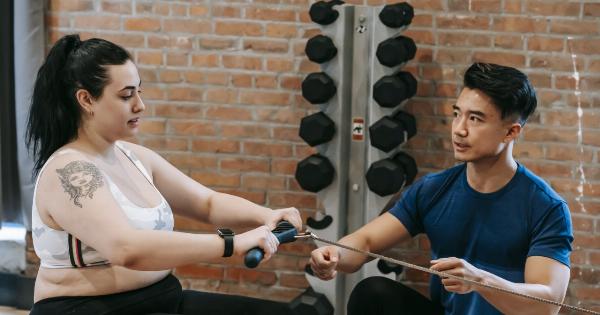Vitamin D is a crucial nutrient that plays a significant role in maintaining overall health and well-being. It is often referred to as the “sunshine vitamin” because our bodies can synthesize it when exposed to sunlight.
However, as individuals age, their ability to produce and absorb vitamin D declines, making them more susceptible to deficiency and a wide range of health issues.
Vitamin D and Muscle Health
One of the lesser-known benefits of vitamin D is its impact on muscle health, particularly in aging adults.
Maintaining muscle mass is essential for overall strength, mobility, and independence, and vitamin D plays a critical role in preserving muscle tissue.
Research has shown that vitamin D deficiency is associated with muscle weakness, increased risk of falls, and a higher likelihood of age-related muscle loss, known as sarcopenia.
Sarcopenia, characterized by a gradual decline in muscle mass and strength, can significantly impair an individual’s functional abilities and quality of life.
Vitamin D and Muscle Function
Beyond its role in preserving muscle mass, vitamin D also plays a crucial role in muscle function. It contributes to the regulation of calcium levels in muscle fibers, facilitating proper muscle contraction and relaxation.
Without adequate vitamin D, muscles may not function optimally, leading to weakness, pain, and reduced mobility.
Moreover, vitamin D is involved in the synthesis and regulation of myokines, which are cytokines produced by muscle tissue. Myokines play a significant role in muscle metabolism, inflammation control, and overall muscle health.
Therefore, vitamin D deficiency can hinder the production and effectiveness of these essential muscle-regulating substances.
The Link Between Vitamin D and Age-Related Muscle Loss
Age-related muscle loss, or sarcopenia, is a common condition among older adults. It is characterized by a gradual decline in muscle mass, strength, and function, leading to reduced mobility, frailty, and an increased risk of falls and fractures.
Several factors contribute to the development and progression of sarcopenia, and vitamin D deficiency has emerged as a significant risk factor.
As individuals age, their bodies become less efficient at converting sunlight into vitamin D, and their dietary intake may also be insufficient.
Studies have shown a strong correlation between low levels of vitamin D and the prevalence of sarcopenia in older adults.
In fact, older adults with vitamin D deficiency are more likely to experience accelerated muscle loss and functional decline compared to those with optimal vitamin D levels.
The Role of Vitamin D in Combating Muscle Loss
By ensuring adequate vitamin D levels, aging adults can minimize the risk of muscle loss and maintain their functional abilities. Vitamin D plays a key role in preserving muscle mass, strength, and function through various mechanisms.
Firstly, vitamin D assists in the absorption of calcium, a mineral essential for maintaining bone health and preventing osteoporosis.
Strong bones provide a solid foundation for muscles, allowing them to work optimally and reducing the risk of fractures.
Secondly, vitamin D influences muscle protein synthesis, the process by which muscle fibers rebuild and repair themselves.
Adequate vitamin D levels help ensure that muscle tissues can effectively carry out this vital repair process, preventing muscle wasting and promoting muscle growth.
Thirdly, vitamin D has anti-inflammatory properties, reducing inflammation within muscle tissue.
Chronic inflammation can contribute to muscle breakdown, and by mitigating this process, vitamin D helps prevent muscle loss and supports overall muscle health.
Furthermore, vitamin D promotes muscle strength and balance, reducing the risk of falls and enhancing functional abilities.
Studies have shown that individuals with higher vitamin D levels have better muscle strength, coordination, and overall physical performance, much of which can be attributed to its influence on muscle health.
Sources of Vitamin D
While sunlight is the primary source of vitamin D synthesis in the body, aging adults may find it challenging to obtain sufficient sunlight exposure due to various factors such as limited mobility or living in regions with long winters or less sunlight. In such cases, dietary sources and supplements become crucial.
Some natural food sources of vitamin D include fatty fish like salmon, mackerel, and sardines, as well as fortified dairy products and breakfast cereals. Additionally, eggs and mushrooms provide small amounts of vitamin D.
However, it can be challenging to achieve optimal vitamin D levels through diet alone, especially for aging adults.
Therefore, supplementation under the guidance of a healthcare professional is often recommended to meet the specific needs of each individual.
Considerations for Vitamin D Supplementation
When considering vitamin D supplementation, it is essential to consult with a healthcare professional who can assess an individual’s vitamin D status and recommend an appropriate dosage.
Vitamin D supplements are available in various forms, including capsules, tablets, and liquid drops, making it accessible and convenient for different preferences and needs.
It’s important to note that excessive vitamin D supplementation can lead to toxicity, so it is crucial to follow the recommended dosage provided by healthcare professionals.
They will take into account an individual’s age, medical history, existing vitamin D levels, and specific health conditions to determine the most appropriate supplementation plan.
Conclusion
Vitamin D is a critical nutrient that plays a vital role in combating muscle loss among aging adults.
By maintaining optimal vitamin D levels through exposure to sunlight, dietary sources, and appropriate supplementation, older individuals can minimize the risk of age-related muscle loss, preserve their strength and independence, and enhance their overall quality of life.































